How To Grow And Care For Calathea Beauty Star?
Written by Ivy
Dec 27 2021
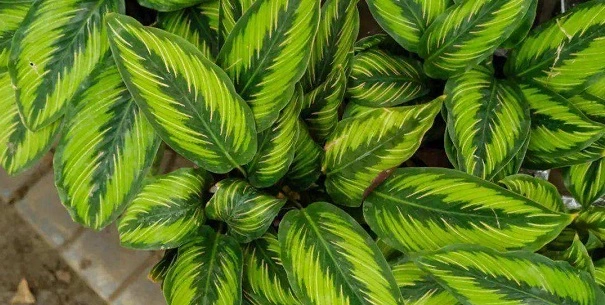
Calathea beauty star has dense branches and leaves and plump plant shape; Calathea beauty star is an excellent indoor shade loving foliage plant with bright green leaves and purple red backs. Calathea beauty star is used to decorate bedrooms, living rooms, offices and other places. It looks quiet and solemn for long-term appreciation. How to Grow and care for Calathea beauty star? Let's see it together!
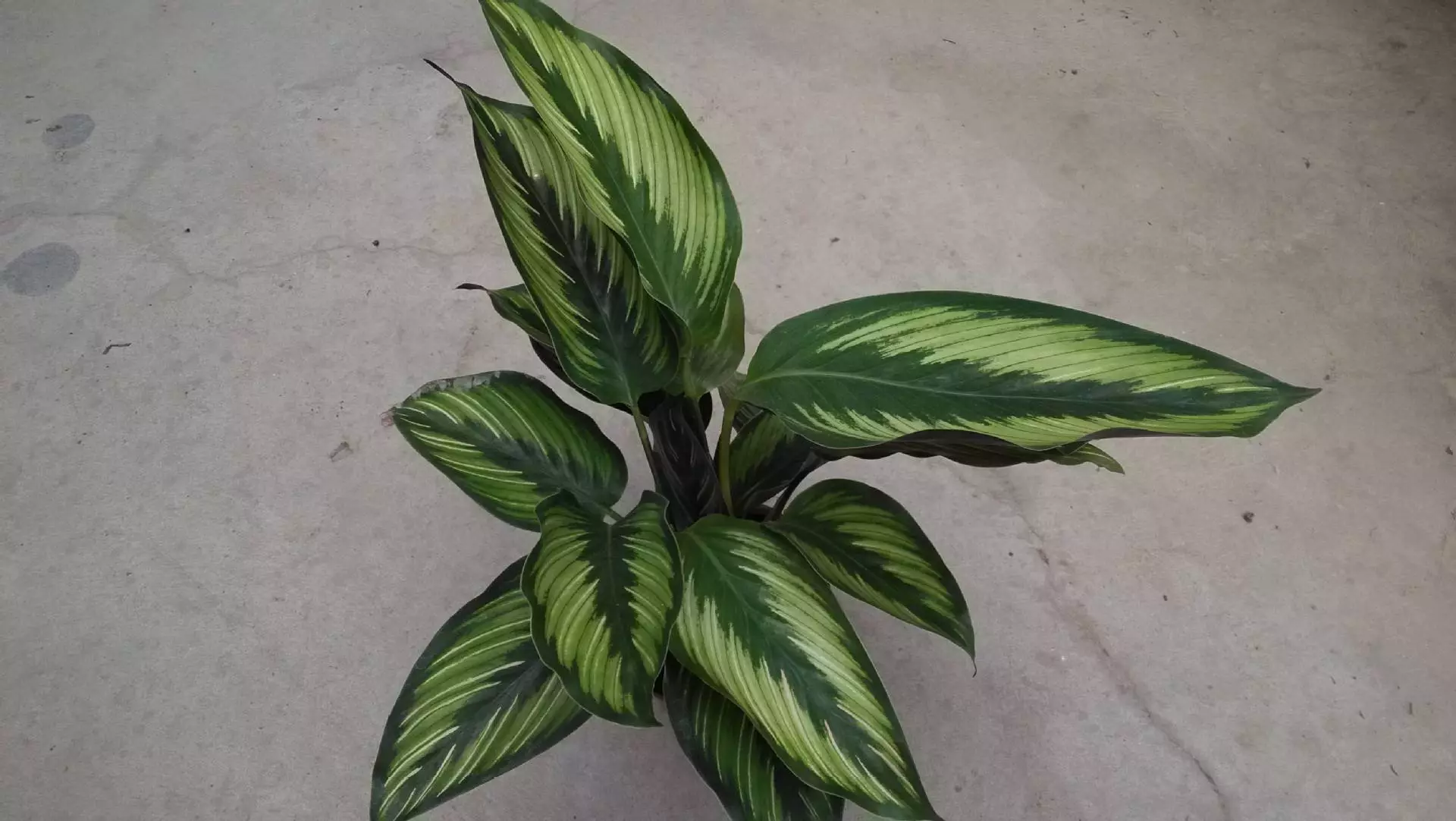 The planting season of Calathea beauty star is usually in spring and summer. Because the suitable production temperature of Calathea beauty star in the growth process is between 12 ° C and 29 ° C, and it also prefers a higher air humidity in the growth process, so spring and summer meet the growth of Calathea beauty star. In addition, in the vigorous growth season of Calathea beauty star, we also need to apply rotten liquid fertilizer to it every half a month, and the concentration should not be too high to avoid damaging the root system of the plant.
The planting season of Calathea beauty star is usually in spring and summer. Because the suitable production temperature of Calathea beauty star in the growth process is between 12 ° C and 29 ° C, and it also prefers a higher air humidity in the growth process, so spring and summer meet the growth of Calathea beauty star. In addition, in the vigorous growth season of Calathea beauty star, we also need to apply rotten liquid fertilizer to it every half a month, and the concentration should not be too high to avoid damaging the root system of the plant.
In winter, according to the actual situation, Calathea beauty star can be illuminated all day. If the light is particularly strong, it can be slightly shaded. If the light is too strong, the leaf color will be yellow and easy to "focus". During the curing process, Calathea beauty star should not be placed too densely. The seedlings should be placed according to the growth situation and time of the seedlings. If the placement is too dense, the lower leaves cannot receive sufficient light, the humidity is high, and the lower leaves are "easy to yellow" or "scorched leaves".
Calathea beauty star is a warm plant. It is suitable to grow at 20-30 ℃. When it is higher than 35 ℃ or lower than 7 ℃, the plant will stop growing and the overwintering temperature will not be lower than 13 ℃. Heating equipment is required for winter maintenance. If heating facilities are not used, double-layer insulation facilities can be used. The shed shall be closed in time when the temperature drops to 22-24 ℃ in the afternoon of winter. Cooling equipment is required for summer maintenance. If there is no heating and cooling equipment, shade and ventilation shall be strengthened in summer to supplement leaf water and ground water to achieve the purpose of cooling. At the same time, the long-distance multi span greenhouse shall not be used, but the independent single ceiling shall be used.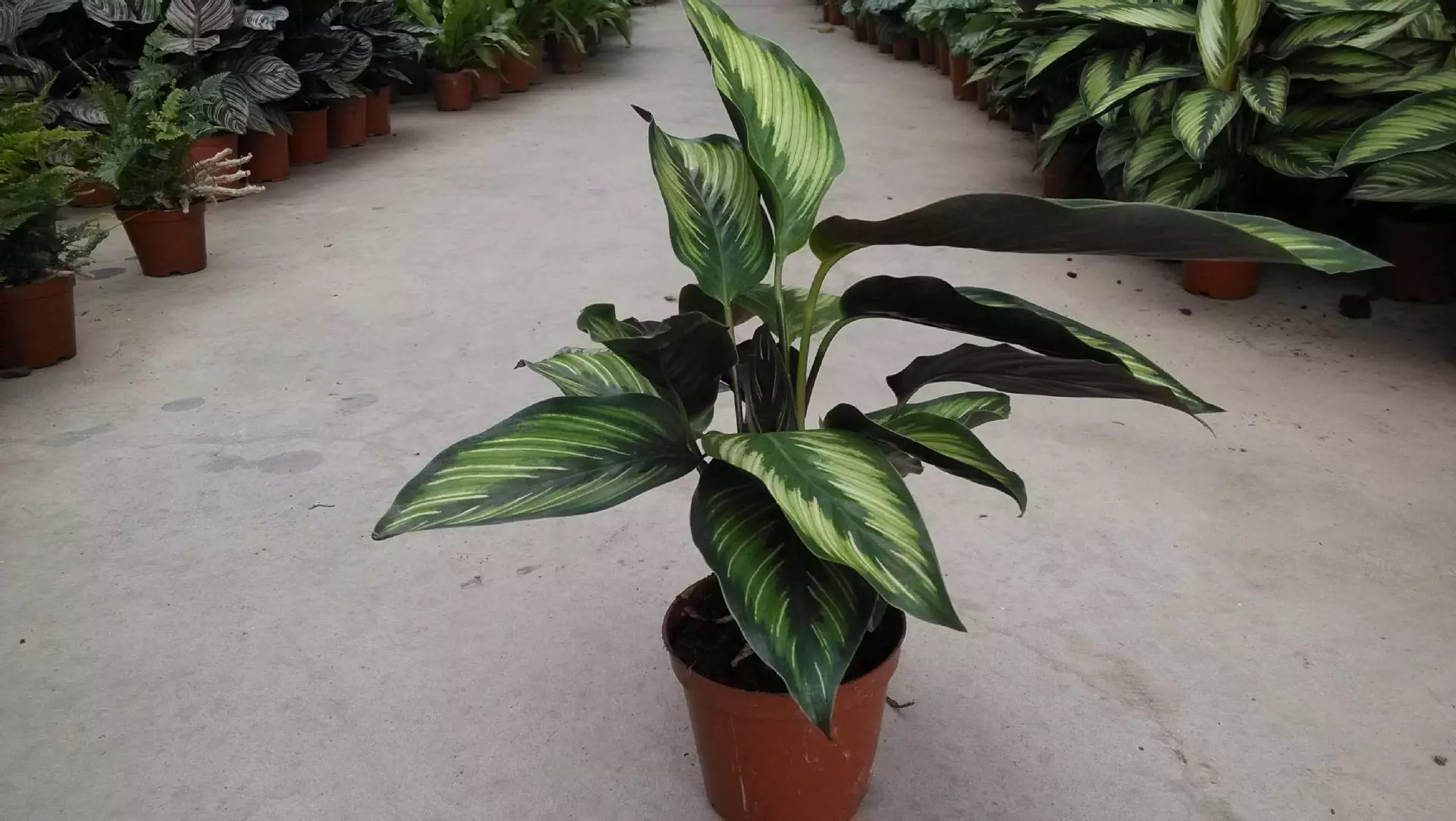
Replace the pots and soil for Calathea beauty star. Do not replace all the soil. Leave some protective soil, that is, remove the soil outside the soil lump by hand. If it is found that Calathea beauty star has rotten and shriveled fibrous roots, trim them in time and put the plants in a cool and ventilated place to dry.
Re prepare the pot soil. If the branches and leaves of Calathea beauty star grow vigorously, you can select a flower pot one circle larger than the original flower pot, pad a layer of ceramsite on the bottom of the pot, and then prepare loose and fertile nutrient soil, which can be mixed with rotten leaf soil and perlite.
We can pour half of the soil into the flowerpot, plant Calathea beauty star with the soil into the flowerpot, retain the soil between the plant roots, then continue to fill the flowerpot, gently compact the soil by hand, and water it once.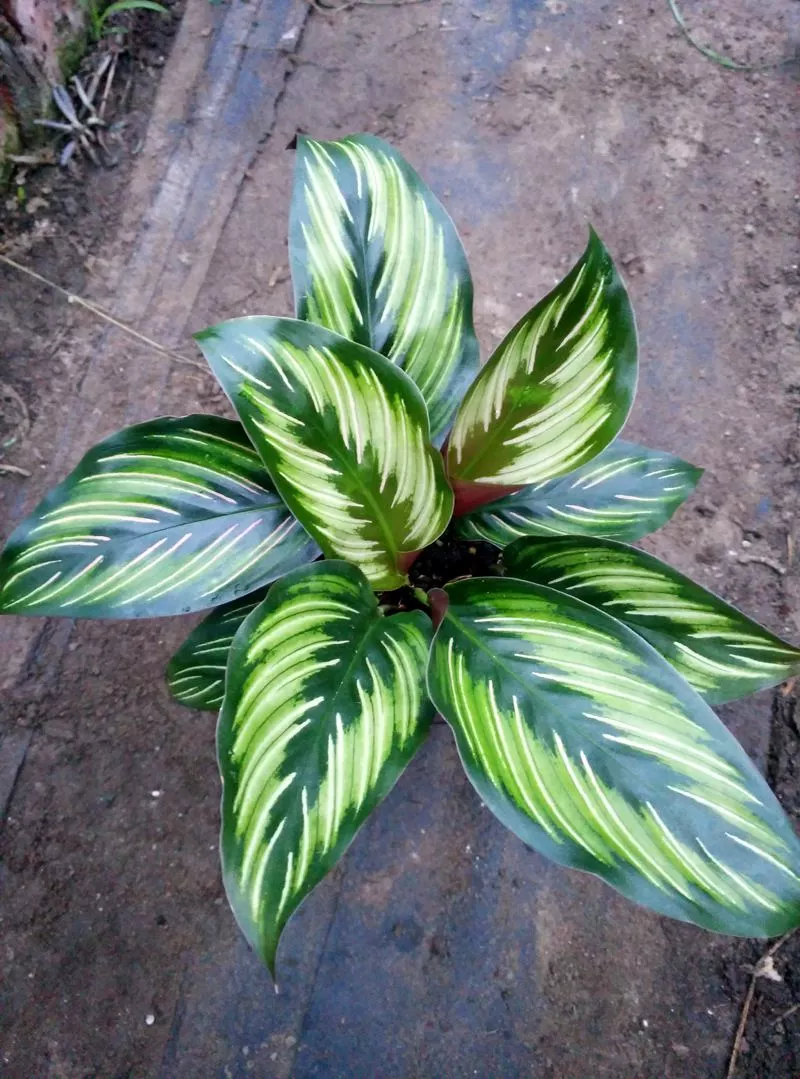
Control Method: when white silk disease occurs in Calathea beauty star, we can add 70% pentachloronitrobenzene to the soil to disinfect the soil, remove the diseased soil, and pay attention to ventilation during cultivation to prevent over dense planting.
Control Method: increase the application of base fertilizer, enhance disease resistance, and remove the diseased leaves in time. Spray 75% chlorothalonil wettable powder 500-600 times before onset.
Control Method: the scale insect is easy to kill by spraying at the peak of nymph. Spray once every 7-10 days for 2-3 consecutive times. It can be sprayed with 40% Omethoate 1000 times solution, 50% dichlorvos 1000 times solution and 2.5% deltamethrin 3000 times solution.
Control Method: keep the environment ventilated, keep the humidity, and spray water frequently on the back of the leaves to control the reproduction of red spider. Since it is difficult for pesticides to kill insect eggs, they are generally controlled in the adult and nymph stage after egg hatching. They can be sprayed with 1000 times of 20% dicofol emulsion or 40% Omethoate emulsion.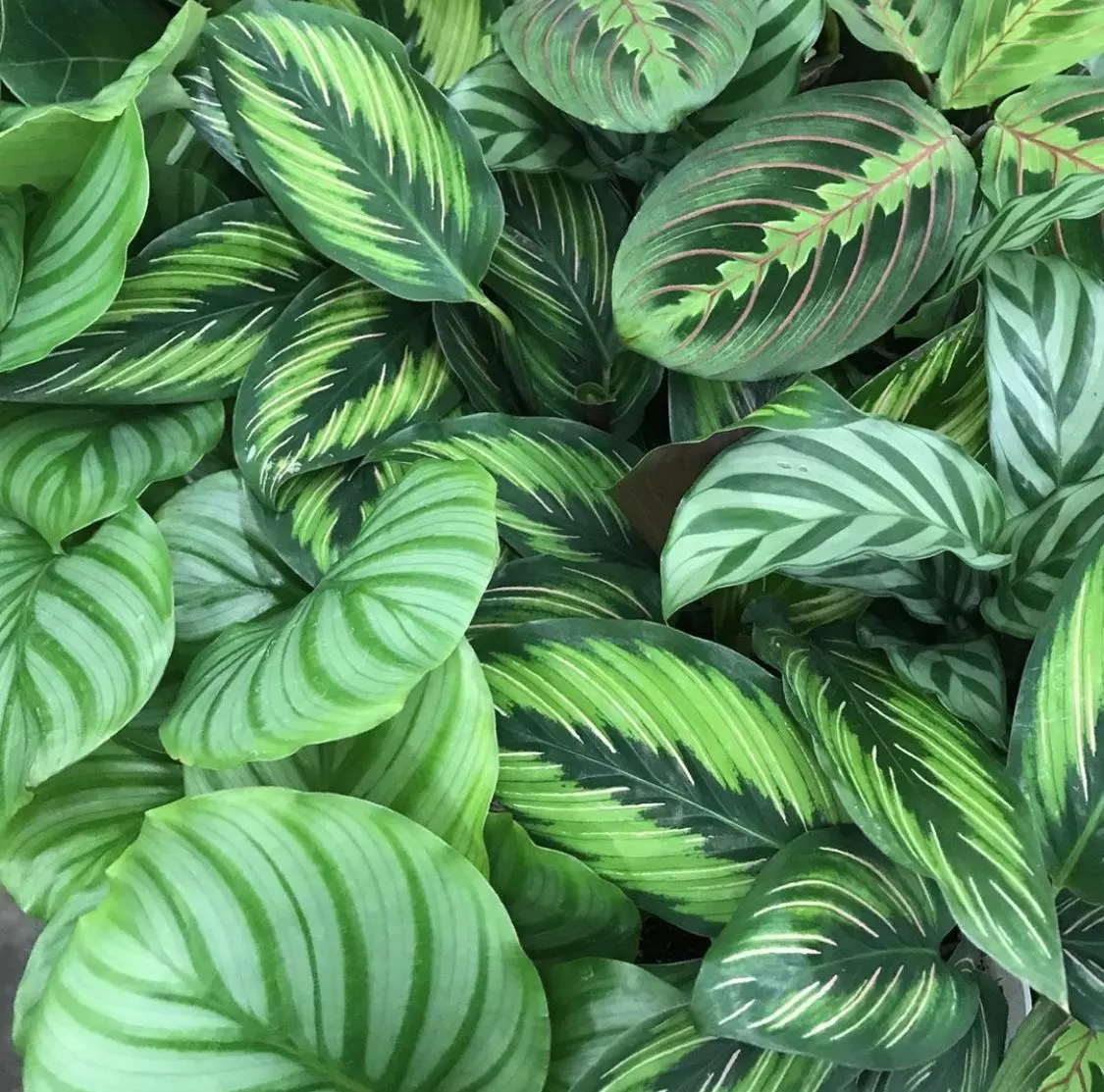
After cuttings treatment, they were inserted into the seedbed with a row spacing of 5 × 10 cm is preferred. Covered with film bow shed, the management method is the same as ramet propagation. Calathea beauty star propagation from cutting can be carried out at any time when the temperature is not lower than 20 ℃. Cuttings 30-50 natural roots; But the survival rate of cutting is not as high as that of ramet propagation; Generally about 50%.
For a small amount of reproduction, the cut root block with stem, leaf and leaf bud can be directly placed in the mud basin; In case of mass reproduction, it should be placed on the seedbed; When the temperature and humidity cannot meet the requirements, it shall be covered with film; Make sure that the temperature in the film reaches 20-28 ℃ and the humidity is more than 80%.
Calathea Beauty Star Quick InfoWhen to Plant Calathea Beauty Star?Calathea Beauty Star Care in DetailCalathea Beauty Star WateringCalathea Beauty Star SoilCalathea Beauty Star LightCalathea Beauty Star TemperatureCalathea Beauty Star HumidityCalathea Beauty Star FertilizerCalathea Beauty Star PruningCalathea Beauty Star RepottingCalathea Beauty Star Pest & Disease ControlCalathea Beauty Star PropagationCalathea Beauty Star Propagation from CuttingCalathea Beauty Star Propagation from Division
Calathea Beauty Star Quick Info
| Botanical/Scientific Name | Calathea Beauty Star |
| Common Name | Peacock Plant |
| When to Grow/Bloom/Harvest | Grow in Spring and Summer |
| Uses | House plant |
| Origin | Amazon in South America |
| Light Care | Bright, indirect light |
| Soil Care | Moist soil |
| Temperature Care | Between 65 and 85°F (18-30°C) |
| Humidity Care | Above 50 percent |
| Watering | Water your plant upon delivery |
| Pruning Care | Pruning older Leaves |
| Fertilizer Care | Fertilizer every four weeks |
| Propagation | Dividing its rhizomes |
| Toxic | Non-toxic to both cats and dogs |
| Flower Color | White, rarely flowers |
When to Plant Calathea Beauty Star?

Calathea Beauty Star Care in Detail
Calathea Beauty Star Watering
In spring, summer and autumn, we should keep the Calathea beauty star basin soil moist. We can water it often. When the soil surface is slightly dry, we can water it. In summer, we can often spray water on the leaves, once in the morning and once in the evening; Water less in winter and keep the basin soil dry. Even if the leaves of Calathea beauty star wither, the plants will pull out new leaves again after warming up in spring.Calathea Beauty Star Soil
The first step in the conservation of Calathea beauty star is the preparation of soil. Calathea beauty star likes to grow in loose, fertile and breathable soil with good drainage. During breeding, Calathea beauty star soil can be prepared by mixing rotten leaf soil, garden soil and river sand.Calathea Beauty Star Light
Calathea beauty star likes semi shade environment and avoid exposure to the hot sun, which is easy to cause yellow leaves. It is suitable to be placed in a bright astigmatism place; The light should not be too weak, otherwise the leaves of Calathea beauty star will become thin and dull, lose their due fresh beauty, and bask in the sun in winter.In winter, according to the actual situation, Calathea beauty star can be illuminated all day. If the light is particularly strong, it can be slightly shaded. If the light is too strong, the leaf color will be yellow and easy to "focus". During the curing process, Calathea beauty star should not be placed too densely. The seedlings should be placed according to the growth situation and time of the seedlings. If the placement is too dense, the lower leaves cannot receive sufficient light, the humidity is high, and the lower leaves are "easy to yellow" or "scorched leaves".
Calathea Beauty Star Temperature
Calathea beauty star is resistant to high temperature, shade and stuffy. The most suitable growth temperature of bamboo taro is 20 ~ 22 ℃. The highest temperature in summer should be no more than 32 ℃, and the greenhouse should be higher than 18 ℃ in winter, otherwise it will lead to poor growth of Calathea beauty star.Calathea beauty star is a warm plant. It is suitable to grow at 20-30 ℃. When it is higher than 35 ℃ or lower than 7 ℃, the plant will stop growing and the overwintering temperature will not be lower than 13 ℃. Heating equipment is required for winter maintenance. If heating facilities are not used, double-layer insulation facilities can be used. The shed shall be closed in time when the temperature drops to 22-24 ℃ in the afternoon of winter. Cooling equipment is required for summer maintenance. If there is no heating and cooling equipment, shade and ventilation shall be strengthened in summer to supplement leaf water and ground water to achieve the purpose of cooling. At the same time, the long-distance multi span greenhouse shall not be used, but the independent single ceiling shall be used.

Calathea Beauty Star Humidity
Calathea beauty star can grow well only in a high humidity environment. Therefore, we should often spray the plants and the surrounding ground with water at ordinary times, and water with warm water or cold boiled water in winter. If there are brown spots on the leaf surface in winter, it is the reason why the water temperature is too low. How to improve the air humidity around Calathea beauty star? We can improve the air humidity around Calathea beauty star by spraying water on the leaf, drinking water around the potted flowers, and adding water in the basin at the bottom of the basin.Calathea Beauty Star Fertilizer
During the growth period of Calathea beauty star, fertilizer can be applied once a week. When the temperature is higher than 30 ℃, fertilizer cutting is required. Generally, thinner liquid fertilizer will be selected.Calathea Beauty Star Pruning
During the growth and caring process of Calathea beauty star, withered and yellow branches and leaves may appear due to improper maintenance, so the branches and leaves should be trimmed. During daily maintenance, if we find withered and yellow branches and leaves, we can cut off Calathea beauty star in time, which can reduce the consumption of nutrients and avoid affecting the beauty. It grows fast, so its branches and leaves are lush. Cut off the irregular branches and leaves in time to avoid the old leaves blocking the deformation of new leaves. After pruning, it can not only make the appearance of Calathea beauty star more beautiful, but also enhance the light transmittance and air permeability, reduce the possibility of diseases and pests, and promote the healthy growth of Calathea beauty star in the future. After growing for a period of time, Calathea beauty star has developed roots, which can be pruned.Calathea Beauty Star Repotting
If we want to change the pots and soil for Calathea beauty star, we should first properly control the water and change the pots when the soil planted with Calathea beauty star is slightly dry, so as to avoid the soil being too wet and damaging the root system when changing the pots. When changing the pot, turn the pot upside down and take the plant out of the pot with the soil lump.Replace the pots and soil for Calathea beauty star. Do not replace all the soil. Leave some protective soil, that is, remove the soil outside the soil lump by hand. If it is found that Calathea beauty star has rotten and shriveled fibrous roots, trim them in time and put the plants in a cool and ventilated place to dry.
Re prepare the pot soil. If the branches and leaves of Calathea beauty star grow vigorously, you can select a flower pot one circle larger than the original flower pot, pad a layer of ceramsite on the bottom of the pot, and then prepare loose and fertile nutrient soil, which can be mixed with rotten leaf soil and perlite.
We can pour half of the soil into the flowerpot, plant Calathea beauty star with the soil into the flowerpot, retain the soil between the plant roots, then continue to fill the flowerpot, gently compact the soil by hand, and water it once.

Calathea Beauty Star Pest & Disease Control
- White Silk Disease
Control Method: when white silk disease occurs in Calathea beauty star, we can add 70% pentachloronitrobenzene to the soil to disinfect the soil, remove the diseased soil, and pay attention to ventilation during cultivation to prevent over dense planting.
- Leaf Spot
Control Method: increase the application of base fertilizer, enhance disease resistance, and remove the diseased leaves in time. Spray 75% chlorothalonil wettable powder 500-600 times before onset.
- Scale
Control Method: the scale insect is easy to kill by spraying at the peak of nymph. Spray once every 7-10 days for 2-3 consecutive times. It can be sprayed with 40% Omethoate 1000 times solution, 50% dichlorvos 1000 times solution and 2.5% deltamethrin 3000 times solution.
- Starscream
Control Method: keep the environment ventilated, keep the humidity, and spray water frequently on the back of the leaves to control the reproduction of red spider. Since it is difficult for pesticides to kill insect eggs, they are generally controlled in the adult and nymph stage after egg hatching. They can be sprayed with 1000 times of 20% dicofol emulsion or 40% Omethoate emulsion.

Calathea Beauty Star Propagation
Calathea Beauty Star Propagation from Cutting
Calathea beauty star propagation from cutting generally uses the top young shoot, and the cuttings are 10-15cm long. Depending on the size of the leaves, one-third or one-half of the leaves are retained. The cuttings are treated with 500ppm Nai acetic acid for 2-3 seconds, or indole acetic acid, indole butyric acid and ABT rooting powder.After cuttings treatment, they were inserted into the seedbed with a row spacing of 5 × 10 cm is preferred. Covered with film bow shed, the management method is the same as ramet propagation. Calathea beauty star propagation from cutting can be carried out at any time when the temperature is not lower than 20 ℃. Cuttings 30-50 natural roots; But the survival rate of cutting is not as high as that of ramet propagation; Generally about 50%.
Calathea Beauty Star Propagation from Division
Calathea beauty star propagation from division is quite common. Division Propagation is ideal when the temperature is about 20 ℃ in spring, but it can also be carried out all year round as long as the temperature and humidity are appropriate. When Planting, we can cut the root block with stem, leaf or leaf bud with a sharp knife;For a small amount of reproduction, the cut root block with stem, leaf and leaf bud can be directly placed in the mud basin; In case of mass reproduction, it should be placed on the seedbed; When the temperature and humidity cannot meet the requirements, it shall be covered with film; Make sure that the temperature in the film reaches 20-28 ℃ and the humidity is more than 80%.
Latest Updated
- Benefits of Bugleweed - 7 Science-backed Health Benefits
- Bugleweed Dangers & Side Effects - Is It Poisonous?
- How to Plant Evergreen Trees - What You Should Know
- When to Plant Evergreens - Grow Guide for Evergreen Trees
- 12 Wonderful Evergreen Shrubs for Your Garden
- 12 Popular Evergreen Plants with Pictures for Beginners
- When And How To Prune A Lilac Bush Like a Pro
- How to Grow & Care for Lilac Vine (Hardenbergia Violacea)
- Japanese Lilac Tree (Syringa Reticulata) Care & Propagation Guide
- Shumard Oak Pros and Cons - What to Know
Popular Articles
- Winter maintenance of Antirrhinum Majus
- How to Grow Terminalia Mantaly Tree
- How to Grow and Care for Crossostephium Chinense
- How to grow Antirrhinum Majus in spring
- Peristeria Elata (Dove Orchid) Profile: Info & Care Guide
- Underwatered Snake Plant (Sansevieria Trifasciata) - Signs And How To Fix
- How to Care for Brazilian Jasmine Plant (Mandevilla Sanderi)
- How to Grow & Care for Graptopetalum Purple Delight in Summer
- Rosa Chinensis (China Rose): Plant Growing & Care Tips
- How to Care for Baby Sun Rose (Aptenia Cordifolia)